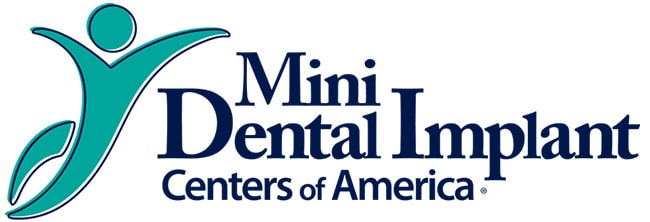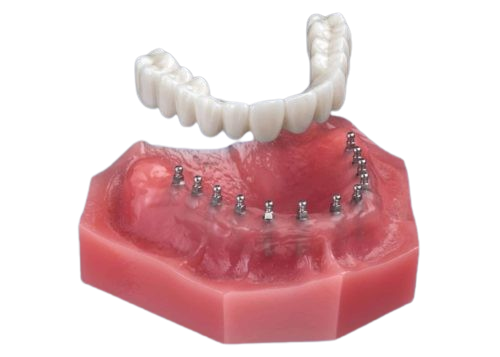Innovation transforms lives in ways we sometimes take for granted. Consider the evolution of modern automobiles. Once, safety was simply about seatbelts. We now have lane-assist technology and collision-avoidance systems that protect drivers from harm. These advancements are a testament to humanity’s drive to solve problems with precision and care. They don’t just mitigate damage but actively prevent risks, creating a safer, more seamless experience. Tooth replacement might not have seemed, at first glance, an area ripe for innovation. Traditional dentures served their purpose for years, but they came with compromises: discomfort, instability, and limitations in daily life. These were accepted as part of the experience—until they weren’t. Modern advancements, like the roundhouse bridge supported by mini dental implants, represent a refusal to accept those limitations. They redefine what patients can expect, combining stability, functionality, and aesthetics into a solution that feels as natural as it is transformative.
Roundhouse Bridge vs. Traditional Dentures: What Sets Them Apart?
Traditional dentures have provided a practical answer to missing teeth for decades, offering an affordable and straightforward solution. These appliances rely on a gum-colored acrylic base to rest on the gums and support artificial teeth, creating the appearance of a complete smile. However, their simplicity often comes with challenges. Over time, dentures can slip, cause irritation, and fail to provide patients with the stability and natural function for confident eating and speaking. They address the problem but leave room for significant improvement.
A roundhouse bridge offers an entirely different approach. Designed as a horseshoe-shaped restoration, it replaces an entire arch of teeth while fitting naturally to the contours of the mouth. The foundation of its stability lies in dental implants, which we strategically place into the jawbone. These implants anchor the bridge securely and help maintain jawbone health by mimicking the role of natural tooth roots. This connection ensures that the bridge stays firmly in place.
The roundhouse bridge is often crafted from zirconia, a material known for its exceptional strength and natural appearance. This option comes in two variations: semi-removable and non-removable.
A semi-removable roundhouse bridge is permanently fixed in place but can be removed by Dr. Rodriguez or Dr. Lemieux during routine dental checkups for professional cleaning. This ensures optimal hygiene while giving you the confidence of a stable, long-lasting smile.
A non-removable roundhouse bridge, on the other hand, is cemented in place and functions just like natural teeth. It provides the highest level of stability and does not need to be removed at any time.
Fix-on-Six®: The Secure Foundation for Your Roundhouse Bridge
You may have heard of the All-on-4® system, a popular dental implant solution designed to support a full arch of teeth. As its name suggests, this system uses four traditional dental implants to anchor a roundhouse bridge. While this approach is effective for some patients, relying on just four implants has its challenges. Each implant must carry a significant portion of the load created by everyday activities like biting and chewing. Over time, this concentrated stress can increase the likelihood of one implant failing.
When an implant fails in an All-on-4 system, the remaining three implants must take on even more pressure. This imbalance can compromise the entire structure, potentially leading to discomfort, reduced functionality, and even the need for additional dental work.
Think of this like building a house on just four support beams. While the structure might stand, each beam takes on a heavy load. If one beam starts to crack or give way, the entire foundation becomes unstable. The Fix-on-Six® system offers a smarter, more secure solution. It incorporates six to 10 mini dental implants to support the roundhouse bridge, creating a stronger foundation by spreading the bite forces evenly across the jaw. With more support points, this system reduces stress on individual implants, ensuring greater stability, comfort, and longevity for your new teeth.
Mini Implants vs. Traditional Implants: How Are They Different?
At first glance, the Fix-on-Six system might seem like it requires more effort—after all, more implants usually suggest a more involved treatment process. However, the advantages become clear when you consider the differences between mini dental implants and traditional implants. Mini implants are designed to offer a simpler, more efficient route to a fully restored smile.
The most noticeable difference is their size. Traditional dental implants are approximately 5 millimeters in diameter, while mini implants are less than 3 millimeters—almost half the size. While a few millimeters might not seem like much, this difference significantly impacts the placement process. Because of their larger size, traditional implants often require a more invasive surgical procedure, including incisions, stitches, and sometimes preparatory procedures like bone grafting. This requirement not only lengthens the treatment timeline but also increases recovery times.
By contrast, mini implants streamline the process. Their smaller size allows for a minimally invasive placement procedure that typically avoids the need for incisions or stitches, resulting in less discomfort, faster healing, and fewer visits to the dentist. For patients, this size difference translates into a treatment experience that is quicker, simpler, and far more accessible.
Secure Your Smile With the Fix-on-Six® Today
A roundhouse bridge supported by the Fix-on-Six® system offers more than a solution—it provides a foundation for a confident, secure, and natural smile. With the stability of mini dental implants and the durability of advanced materials, this innovation transforms the way you eat, speak, and live each day. Schedule a free consultation at Dr. Rodriguez & Associates today. Let us help you experience the benefits of modern dental innovation.
Stay connected on Facebook and Instagram to learn more about how mini dental implants can transform your denture experience.

